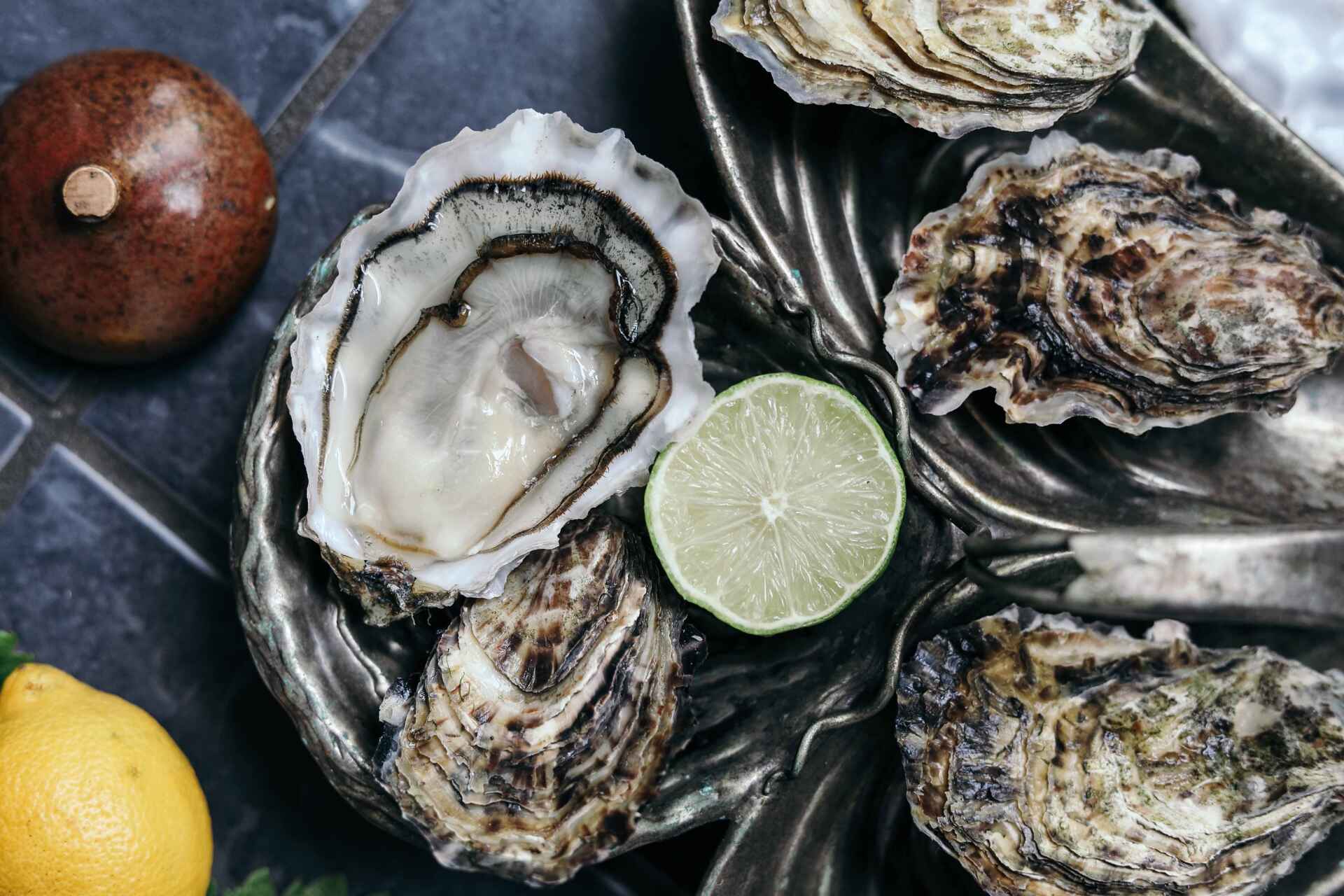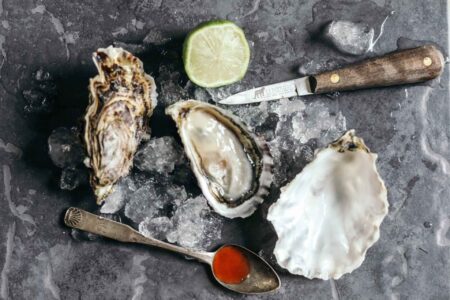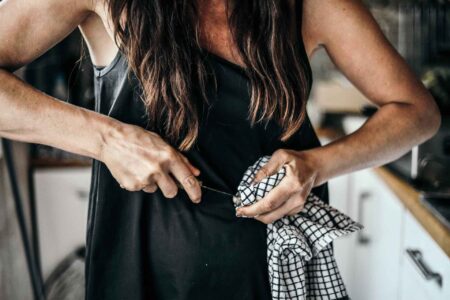Katy Davidson, aka The Oyster Lady, has loved oysters since she was a child. Now in high demand at food festivals and private events across the country, she offers shucking services and demonstrations, oyster masterclasses – and has even fed oysters to Sting on Sunday Brunch! We asked Katy to tell us how she came to have such an unusual career, and to share her inside tips for choosing and shucking the best oysters.
How did your love of oysters start?
I’ve always had a passion for food. When I was young we lived in St Ives and my parents had a restaurant in Penzance. It was way ahead of the curve in terms of local and slow food – often more by necessity than design! My dad would cycle around to the local farms and collect produce and instead of charging him, the farmers would come in for Saturday night dinner.
Later we moved to Bristol where we lived on a council estate but still my dad would be growing things in the garden, making yoghurt in the airing cupboard. There would be demijohns of wine bubbling away in the living room. So we were very connected to food culture as children.
One year when I was about 12, we went on holiday to France in a van. We went to a little market and dad bought some oysters. He had no idea how to shuck them – he was using a little pen knife, so he butchered his hands – but that inspired my fascination and I absolutely loved them.
After that, oysters just seemed to pop up in all of my travels – like in Mozambique where they were served as free bar snacks, and in South Africa. At university, I used to order them online because I couldn’t get them locally, spending my tight budget on bivalves rather than beer!
How did you turn your passion for oysters into a career?
Because of my love of food, I got involved in the Slow Food Movement in Bristol. Through some friends, I started volunteering at the Organic Food Festival, teaching kids food skills – one of which was shucking oysters safely.
Barney Haughton, who now runs cookery school Square Food Foundation, was in charge of the chef’s demo stage and said, “Why don’t you come up and do an oyster cooking demo?”
It seemed to catch people’s imaginations. Soon I was getting national press and invitations to different food festivals, like Abergavenny, Port Elliot and Padstow Christmas Festival. Then in 2018 I put on London Oyster Week, coordinating 25 venues across the city in a month-long campaign, which I put on single-handedly which was quite a challenge but also hugely rewarding.
I can’t actually remember when I became The Oyster Lady – Originally my oyster outfit was called Mangez Moi, which nobody could ever pronounce, so because everyone just called me The Oyster Lady, I decided to go with that.
What’s the best type of oyster?
Oysters have different flavours depending on where they’re from, just like wines, so it’s very much about personal taste. Everyone has their favourite. I met Sting when I was on live on Sunday Brunch and I got to feed him a selection of oyster recipes, which was amazing – and his favourites are Lindisfarne.
Personally I like Porthilly oysters, from here in Cornwall. Porthilly have won blind taste test oyster competitions multiple times. I think it’s because the oyster farm is in a lovely sandy estuarine area so you’ve got the river feeding it brackish water and also the salinity coming up from the sea. Whereas a Jersey oyster, for example, is formed quite far out in a deeper ocean area, so it’s much saltier, which can be overwhelming for some people.
What should you look for when buying oysters?
The first thing to think about is how your oysters have been farmed. The kind of oysters you tend to get in supermarkets are usually ones that have been industrially farmed in high numbers, which means they’re going to be stringy little things with very little meat, so I wouldn’t buy them there.
What you want is oysters that are given space to grow and good water flow for nutrients so they can become really plump. In France, Fine de Claire oysters are actually required by legislation to have a certain amount of space in special ponds to fatten on phytoplankton.
When you’re buying your oysters, think of it like testing fruit at a market. You want to pick them up and they should have some weight to them. If not, if they’re feeling light and empty, it might be that they haven’t been stored properly and they’ve started to dry out.
Oysters open and close at different times of day, which means the oyster liquor inside can seep out if they’re not stored cup side down and with a cloth covering them to keep them cool and damp.

What are your top tips for oyster shucking?
The first thing is that unless you’ve been shucking for years, avoid anything with a sharp blade! I can shuck an oyster with just about anything but ideally you want an oyster knife, or otherwise anything with a short, blunt blade, something that’s sturdy and isn’t going to snap, because it’s quite a firm manoeuvre.
An oyster is shaped roughly like a teardrop. You hold it by the cup, then where the hinge is at the point you push the blade firmly in at the right angle, which is determined by the shape of the oyster. Then it’s a case of doing a little ‘shimmy, shimmy, shimmy’ side to side and when you feel you’ve got some purchase, you do what I call the motorbike rev. You twist your fist forward with a really firm action and you should feel a pop. Sometimes people are in too much of a rush and end up ripping the oyster. You need to go steady and firm.
Katy is available for private bookings – which include shucking services for events, and oyster, crab and lobster masterclasses – through her website, The Oyster Lady.







